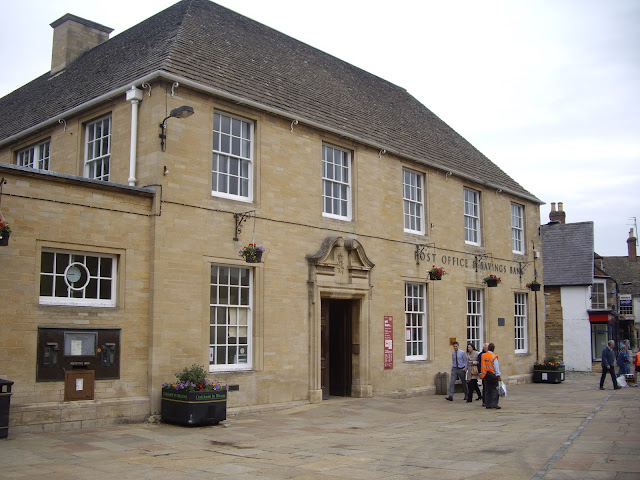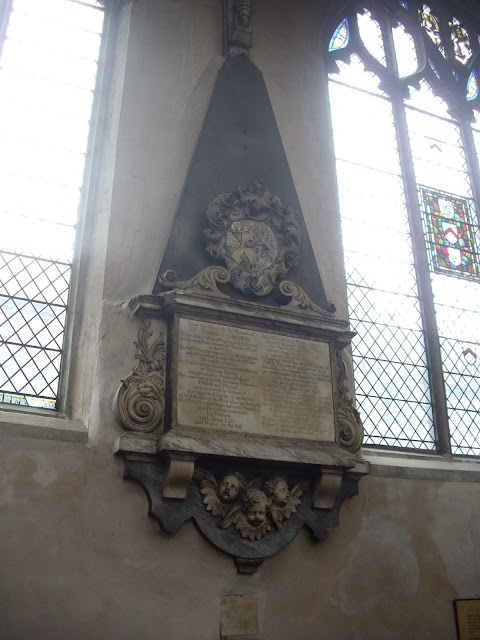Here is a piece of my own artwork. I hope you enjoy it. It's multi-media - Indian ink, watercolour and wax pastel. It's of the east end of Bourne Abbey Church in Lincolnshire.
Thursday, 25 July 2013
Monday, 22 July 2013
Joanna
I must confess to be deeply intrigued by that whole 'Swinging London/Sixties' thing. I'm definitely drawn to the look of it and also, I must admit, to its bohemianism, but I am simultaneously repulsed. I hate its selfishness, vapidity, its indulgence. I realise, of course that it was to a large extent a myth, a piece of journalism, something that has entered the national psyche - a moment of cultural and stylistic victory when the world looked enviously upon us. The truth is that the majority of the nation did not swing, in fact the majority of London did not swing. It was at its core a demographically minute group of people, perhaps a few thousand, perhaps just a few hundred (I've heard as little as five hundred). I suspect that there is always a core of middle and upper class people, and who are welcoming of creative types, who behave in this manner. It merely swings in and out of the public consciousness. The 'Sixties' group was particularly conspicuous in dress and behaviour after a period of austerity and social conservatism.
That explains why late Sunday afternoon the bf played the dvd of 'Joanna'. It's been called the definitive portrayal of the 'Swinging Sixties'. I'm not sure about that as I've never seen such other films as 'Blow Up', 'Smashing Time', or 'Qui etes-vous, Polly Magoo?'. That said 'Joanna' certainly has the look of it. The photography is ravishing, the whole stylish. There are a number of beautiful interiors: Joanna's grandmother's townhouse; Joanna's first boyfriend's sitting room; Joanna's married lover's bedroom (all pale blue toile de jouy - walls, bedhead, and bedcover); Joanna's nightclub owning boyfriend's flat. Yes, I am the sort of guy to notice. Only two of the interiors were contemporary; the others a timeless Englishness.
The story is relatively simple: a naïve (faux-naïve) girl comes up to London to study at the RCA, and sleeps her way into the aristocratic core of swinging London. However if only the film was so elegant as the interiors or the photography. The film is in fact a bit of a dog's dinner: the performances variable - what did, for instance, happen to Donald Sutherland's English accent? Popped out for a swift pint? The characters are not that likeable - 'Joanna' herself is immensely irritating, the others self-obsessed. Are we to read anything into the fact that the sweetest character was a member of the aristocracy? (Not that I mind that at all.) And what on earth was that final chorus line doing in there? I couldn't decide in the end whether the film was a celebration or a condemnation of what we were witness to such was its ability to constantly undermine itself. Well, that was perhaps the message - a scatter gun depiction of people whose lives were essentially chaotic but in a beautiful dressing-up box way. However that isn't good enough a reason to make such a film, and as the train carrying 'Joanna' pulled out of Paddington station in the final scene with her gushing declaration of return, I expressed a wish for a small terrorist bomb further down the line. Just to be certain.
Joanna
That explains why late Sunday afternoon the bf played the dvd of 'Joanna'. It's been called the definitive portrayal of the 'Swinging Sixties'. I'm not sure about that as I've never seen such other films as 'Blow Up', 'Smashing Time', or 'Qui etes-vous, Polly Magoo?'. That said 'Joanna' certainly has the look of it. The photography is ravishing, the whole stylish. There are a number of beautiful interiors: Joanna's grandmother's townhouse; Joanna's first boyfriend's sitting room; Joanna's married lover's bedroom (all pale blue toile de jouy - walls, bedhead, and bedcover); Joanna's nightclub owning boyfriend's flat. Yes, I am the sort of guy to notice. Only two of the interiors were contemporary; the others a timeless Englishness.
The story is relatively simple: a naïve (faux-naïve) girl comes up to London to study at the RCA, and sleeps her way into the aristocratic core of swinging London. However if only the film was so elegant as the interiors or the photography. The film is in fact a bit of a dog's dinner: the performances variable - what did, for instance, happen to Donald Sutherland's English accent? Popped out for a swift pint? The characters are not that likeable - 'Joanna' herself is immensely irritating, the others self-obsessed. Are we to read anything into the fact that the sweetest character was a member of the aristocracy? (Not that I mind that at all.) And what on earth was that final chorus line doing in there? I couldn't decide in the end whether the film was a celebration or a condemnation of what we were witness to such was its ability to constantly undermine itself. Well, that was perhaps the message - a scatter gun depiction of people whose lives were essentially chaotic but in a beautiful dressing-up box way. However that isn't good enough a reason to make such a film, and as the train carrying 'Joanna' pulled out of Paddington station in the final scene with her gushing declaration of return, I expressed a wish for a small terrorist bomb further down the line. Just to be certain.
Joanna
1968
Producer Michael Laughlin
Director Mike Sarne
Cinematography Walter Lassally
Producer Michael Laughlin
Director Mike Sarne
Cinematography Walter Lassally
The weekend
Not long back from a relaxing weekend at the bf's; Saturday morning, coffee with Colin and Tom, Sunday six artist's studios in East Cambs. Some lovely work and one or two enviable homes and indeed lifestyles.
And films. Many films.
This time four and two bits, that's not too mention the first forty minutes of 'The Empire Strikes Back', but I'd rather not mention that. To deal with the bits: "Il Deserto Rosso" by Michelangelo Antonioni, 1964 and 'Bande a part' by Jean Luc Goddard, 1964. I bailed out of both after half an hour - 'The Half-hour rule', we call it.
The four: 'La Notte' , Michelangelo Antonini, 1961; 'The Leopard', Luchino Visconti, 1963; 'Roma', Frederico Fellini, 1972, 'Joanna', Mike Sarne, 1968.
A surfeit of 1960s/Italian cinema.
And films. Many films.
This time four and two bits, that's not too mention the first forty minutes of 'The Empire Strikes Back', but I'd rather not mention that. To deal with the bits: "Il Deserto Rosso" by Michelangelo Antonioni, 1964 and 'Bande a part' by Jean Luc Goddard, 1964. I bailed out of both after half an hour - 'The Half-hour rule', we call it.
The four: 'La Notte' , Michelangelo Antonini, 1961; 'The Leopard', Luchino Visconti, 1963; 'Roma', Frederico Fellini, 1972, 'Joanna', Mike Sarne, 1968.
A surfeit of 1960s/Italian cinema.
Wednesday, 17 July 2013
a little more redecorating....
Things have ground to a halt somewhat, but here are a couple of pics of the room in question last week after the bed was removed.
Wednesday, 10 July 2013
'Ceramics: A Book of Colour Prints'
I've just seen this on the blog 'Flotsam and Jetsam'. Looks great.
I hurriedly wrote this post on Wednesday, such was my enthusiasm for this slight (?) tome. I did, however, also e-mail the author of 'Flotsam and Jetsam' Simon Martin asking permission to upload on to this blog one of his photographs. He kindly consented to this.
It's delightful, and I hope it's whetted your appetite. To find out more just click on link above.
Thank you again Simon. It's greatly appreciated
I hurriedly wrote this post on Wednesday, such was my enthusiasm for this slight (?) tome. I did, however, also e-mail the author of 'Flotsam and Jetsam' Simon Martin asking permission to upload on to this blog one of his photographs. He kindly consented to this.
| Photograph courtesy of Simon Martin |
It's delightful, and I hope it's whetted your appetite. To find out more just click on link above.
Thank you again Simon. It's greatly appreciated
Tuesday, 9 July 2013
Sir John Ninian Comper I
These images are of the Comper glass in Oakham Church. Sir John Ninian Comper, 1864 - 1960, is one of my favourite architects. He comes from that great flowering of architectural talent that occurred in the latter years of the nineteenth century. He was an ecclesiastical architect trained under George Frederick Bodley, that designer of suave, patrician Gothic churches. And Comper could turn out some pretty suave stuff himself - stained glass, embroidery, woodwork, almost anything a High Anglican church could want. He did it beautifully.
There are two things about this window I'd like to point out at this moment. Firstly it is more than likely that the glass was produced from scratch in Comper's own workshop - his 'studio' (he refused to call it an 'office').
Secondly the mixing of Classical and Gothic - this he called 'Unity by Inclusion'. In Comper, the nineteenth century 'Battle of Styles' - between Classical and Gothic - finds its synthesis.
Labels:
churches,
England,
Oakham,
Rutland,
Sir John Ninian Comper,
stained glass
Thursday, 4 July 2013
Oakham
On Tuesday my friend Richard motored up from Cambridgeshire and we spent the day in Rutland. It's something we do at least once each summer. (Though with him moving down to Brighton in a few weeks this may have been the last of these adventures.) The itinerary never varies: we meet up in Stamford before making for the small & attractive towns of Oakham and, after a picnic lunch on the southern shore of Rutland Water, Uppingham. A civilised way to spend a weekday.
This sequence of images follows the route we took from the parish church to the Market Place in Oakham.
This sequence of images follows the route we took from the parish church to the Market Place in Oakham.
Oakham School chapel, Granville Steatfield, 1924-5. Still in the Bodley tradition
Labels:
architecture,
England,
Limestone Belt,
Neo-Georgian,
Oakham,
Rutland
Monday, 1 July 2013
Norwich
I realise this is rather late, but here a few pictures from the trip the bf and I made to Norwich. I was hardly a consistent photographer so the following don't reflect all that we saw, not that we went in search of anything in particular....
Perhaps it's getting to be a bit of cliché to see a house painted in this manner but I do like that colour combination. The creeper too is an attractive addition, hard to think this is in the middle of a large city and not a market town or village.
Provincial Baroque
This is where we had lunch...
Next door in the church of St John Maddermarket is this Georgian ciborium (a rare thing).
In St Stephen's church there was a plethora of Baroque monuments:
Some care has been taken to getting the placing correct.
What was the designer of that screen thinking about?
Labels:
architecture,
Baroque,
churches,
Funerary monuments,
Norwich
Subscribe to:
Comments (Atom)
























